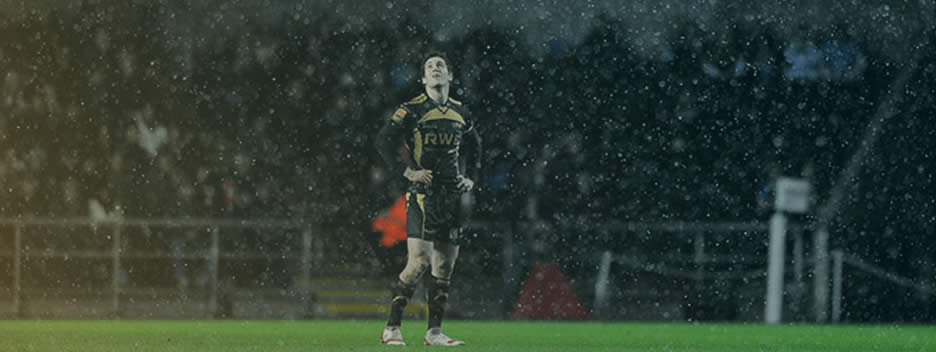Coaching Shift Towards Facilitating Self-Evaluation
- January 23rd, 2019
- Tom Bean

The Rugby 7's series resumes this weekend in Hamilton, NZ where the best players in the world will show off their talents in the high-paced, action-packed, pocket-rocket version of it's 15-a-side brother.
As the teams prepare, coaches will be structuring their plans around the new trend of sports coaching which questions the levels of guidance coaches should offer. With a recent shift away from autocratic guidance, coaches are looking towards facilitating athletes to be self-learning.
In elite sport, we're progressively seeing the coaches role change from guide to facilitator, but how and why has it happened? And should those at grassroots level be following its lead?
Engage with 'why'
Individual and group analysis has become a regular tool amongst sports teams to get athletes thinking about the performance; what they and the team did well, how they and the team could improve and their impact on the result.
Recognising these gets athletes to understand and engage with 'why' the performance was as it was. This encourages players to then think towards 'how' to improve, as a result creating better decision-makers and ultimately better athletes.
This idea of the athlete being actively involved in their own learning moves away from the traditional model of a coach at the top, passing down knowledge to the individual. Instead now, facilitating the athletes learning enhances their proficiency, self-efficacy and natural ability.
The ownership one takes over self-evaluating and giving feedback to their peers develops communication skills and confidence around groups which undoubtedly transfers into the sporting environment. It also allows their own ideas and talent to flourish, rather than being quashed by coaches instructions - this creates a healthy environment within the team.
Freedom to fail and to learn
In recent high-profile cases, we've seen coaches lose dressing rooms by inflicting too much guidance upon players. Most notably, Jose Mourinho lost his players at Manchester United by stifling their freedom to fail and to learn; instead he inflicted a style of play which demanded them to be compact and regimented.
It was clear that this did not play to the strengths of his players, yet he willingly scolded them in public when the performances were not up to it. He gave immediate feedback and did not allow the players to discuss and learn for themselves about the 'why' and the 'how' of the performance.
He made no allowances for players to express their talent for fear of them making mistakes. The players were not afforded the time to work out what they did wrong and to rectify it, instead they were dropped and as a result lost all confidence in their ability.
The team were often criticised by outsiders for lacking leaders prepared to adapt and change during the game. In reality, these characters simply laid dormant, not given the opportunity to develop through self-evaluation and learning - establishing leadership roles within the team can only happen when players are given the platform to do so.
In contrast, where Mourinho gave too much guidance, fellow coach, Pep Guardiola, does the opposite. Raheem Sterling, an effervescent young player who frustrates as much as he dazzles, is given the freedom to fail and afforded the opportunity to learn and rectify mistakes.
Guardiola is sensitive to Sterling's complexities; he overlooks the times he frustrates for knowing that a moment of magic looms. As a coach, he can recognise Sterling's strengths and perceptual skills - skills which one learns during their development that have become second nature. Guardiola does not try to stifel and rectify these, instead he allows the player to use them to improve.
Much has been made of Manchester United's resurgence, and in particular young striker Marcus Rashford's form since Mourinho's departure. Interim coach, Ole Gunnar Solskjaer, hasn't tried to unravel Rashford's natural strengths in order to fit into a regime. Instead he has discussed how he can use these and given pointers on how to improve his overall game in much the same way Guardiola has treated Sterling - the outcomes speak for themselves.
A balance of giving enough guidance
Striking a balance of giving enough guidance and allowing athletes to learn for themselves is difficult. At elite level, it is easier to step away and allow players to adapt; however even at grassroots level, the ideas should be the same.
When coaching young athletes, it can be easy to over-guide them, however by following these 5 steps, you can facilitate the learning process for your athletes too:
- Allow them the freedom to make mistakes;
- Give them the platform to work-out problems themselves and as a group;
- Be available to shoulder any of their queries;
- Give your ideas to the discussion;
- Develop their perceptual skills with pointers, don't try to change them completely.
Athlete's need guidance, they need to be given tactical indicators and can always learn from coaches experience. However, sport has almost universally recognised that the role of the coach is changing. Across all levels, performance increases when coaches aid self-evaluation.
Make sure you take this into account when you're planning your sessions and make time for the players to give their feedback when discussing the success of practices.